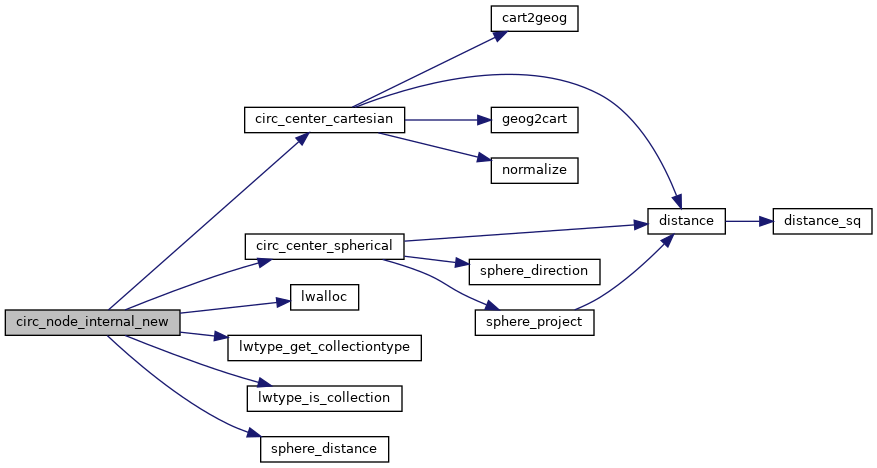◆ circ_node_internal_new()
Create a new internal node, calculating the new measure range for the node, and storing pointers to the child nodes.
Definition at line 230 of file lwgeodetic_tree.c.
277 /* If we can't add next feature to this collection cleanly, promote again to anonymous collection */
284 LWDEBUGF(3, "distance between new (%g %g) and %i (%g %g) is %g", c1.lon, c1.lat, i, c[i]->center.lon, c[i]->center.lat, dist);
333 LWDEBUGF(3, " new center is (%g %g) new radius is %g", new_center.lon, new_center.lat, new_radius);
uint32_t lwtype_get_collectiontype(uint8_t type)
Given an lwtype number, what homogeneous collection can hold it?
Definition: lwgeom.c:1194
int lwtype_is_collection(uint8_t type)
Determine whether a type number is a collection or not.
Definition: lwgeom.c:1168
double sphere_distance(const GEOGRAPHIC_POINT *s, const GEOGRAPHIC_POINT *e)
Given two points on a unit sphere, calculate their distance apart in radians.
Definition: lwgeodetic.c:896
static int circ_center_spherical(const GEOGRAPHIC_POINT *c1, const GEOGRAPHIC_POINT *c2, double distance, double offset, GEOGRAPHIC_POINT *center)
Given the centers of two circles, and the offset distance we want to put the new center between them ...
Definition: lwgeodetic_tree.c:166
static int circ_center_cartesian(const GEOGRAPHIC_POINT *c1, const GEOGRAPHIC_POINT *c2, double distance, double offset, GEOGRAPHIC_POINT *center)
Where the circ_center_spherical() function fails, we need a fall-back.
Definition: lwgeodetic_tree.c:191
Note that p1 and p2 are pointers into an independent POINTARRAY, do not free them.
Definition: lwgeodetic_tree.h:37
References circ_node::center, circ_center_cartesian(), circ_center_spherical(), COLLECTIONTYPE, circ_node::edge_num, FP_EQUALS, circ_node::geom_type, GEOGRAPHIC_POINT::lat, GEOGRAPHIC_POINT::lon, LW_FAILURE, lwalloc(), LWDEBUG, LWDEBUGF, lwtype_get_collectiontype(), lwtype_is_collection(), circ_node::nodes, circ_node::num_nodes, circ_node::p1, circ_node::p2, circ_node::pt_outside, circ_node::radius, sphere_distance(), POINT2D::x, and POINT2D::y.
Referenced by circ_nodes_merge().
Here is the call graph for this function:

Here is the caller graph for this function:
